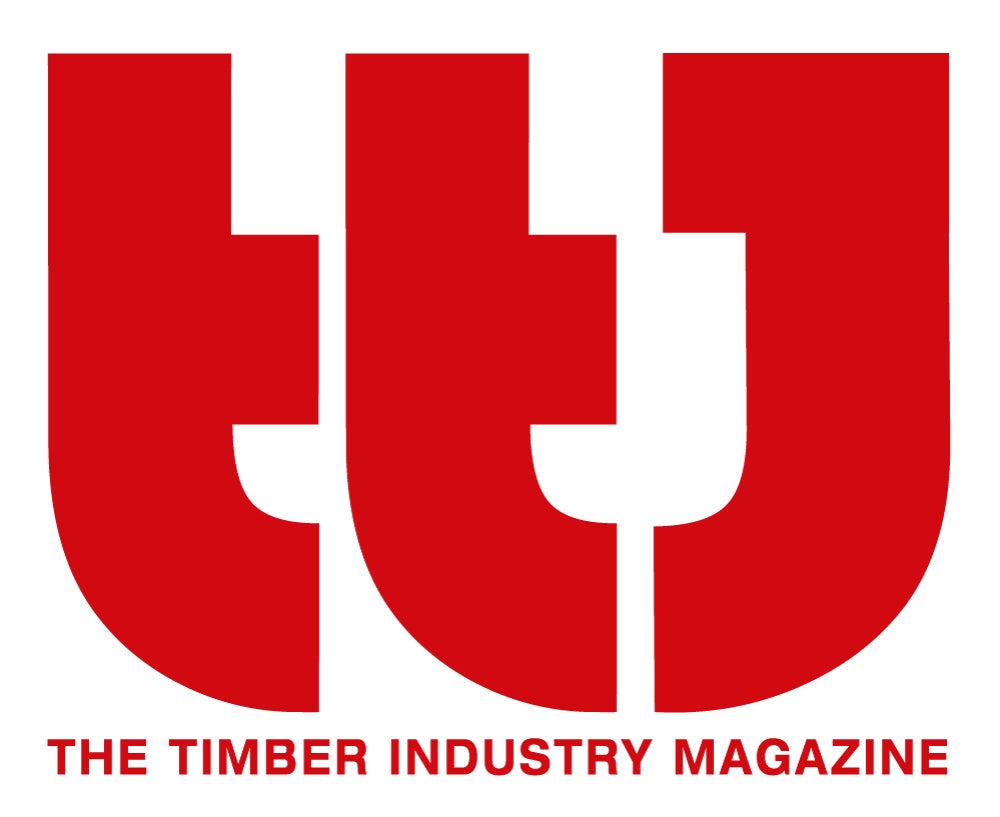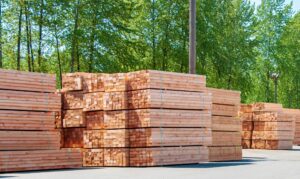 Framing lumber markets hovered in a holding pattern as traders embraced a wait-and-see approach to a potential 25% tariff on Canadian shipments. The Random Lengths Framing Lumber Composite Price finished the week $1 lower. Western S-P-F buyers moved to the sidelines in late trading, citing minimal immediate needs and uncertainty about the tariffs and near-term prospects. …Price weakness lingered in the Southern Pine market amid sluggish to stagnant sales. Buyers lacked urgency and the potential impact of tariffs on demand for SYP was a widespread topic of conversation. …Traders debated how much of a price spread between Western S-P-F and SYP would need to emerge before end users substituted species on a larger scale. …In Coast markets, Hem-Fir dimension continued to face serious downward pressure from soft Inland prices. Meanwhile, dry Douglas Fir dimension prices stabilized, assisted by a green market that has found its footing.
Framing lumber markets hovered in a holding pattern as traders embraced a wait-and-see approach to a potential 25% tariff on Canadian shipments. The Random Lengths Framing Lumber Composite Price finished the week $1 lower. Western S-P-F buyers moved to the sidelines in late trading, citing minimal immediate needs and uncertainty about the tariffs and near-term prospects. …Price weakness lingered in the Southern Pine market amid sluggish to stagnant sales. Buyers lacked urgency and the potential impact of tariffs on demand for SYP was a widespread topic of conversation. …Traders debated how much of a price spread between Western S-P-F and SYP would need to emerge before end users substituted species on a larger scale. …In Coast markets, Hem-Fir dimension continued to face serious downward pressure from soft Inland prices. Meanwhile, dry Douglas Fir dimension prices stabilized, assisted by a green market that has found its footing.

 The Bank of Canada is being pulled in a few different directions ahead of its first interest rate decision of the year on Wednesday. On one hand, there are signs of trouble bubbling up in underlying inflation that could make an argument for keeping borrowing costs higher for longer. On the other: Donald Trump has reiterated threats to impose tariffs of 25% on Canadian goods that could be set to take effect mere days after the central bank’s rate decision. …A trade blow like that would normally push the Bank of Canada towards steeper rate cuts in a bid to salvage economic growth. But dropping rates too quickly at a time when the loonie is already struggling risks fuelling more inflation on imports from the US. Economists say they’re betting the Bank of Canada will go ahead with another cut.
The Bank of Canada is being pulled in a few different directions ahead of its first interest rate decision of the year on Wednesday. On one hand, there are signs of trouble bubbling up in underlying inflation that could make an argument for keeping borrowing costs higher for longer. On the other: Donald Trump has reiterated threats to impose tariffs of 25% on Canadian goods that could be set to take effect mere days after the central bank’s rate decision. …A trade blow like that would normally push the Bank of Canada towards steeper rate cuts in a bid to salvage economic growth. But dropping rates too quickly at a time when the loonie is already struggling risks fuelling more inflation on imports from the US. Economists say they’re betting the Bank of Canada will go ahead with another cut.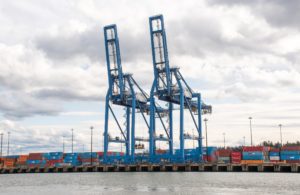 U.S. trade with Canada and Mexico is back in Trump’s crosshairs with the tariff threat. …Much of the focus has centered on autos but Canada is also the top trading partner of the U.S. for critical chemicals, an industry now bracing for the potential impact. …Mineral firms in Canada are considered domestic sources under Title III of the Defense Production Act and have received U.S. federal funding for critical minerals projects in Canada. …Canada is also the largest supplier of U.S. energy imports, including crude oil, natural gas, and electricity. …Rand Ghayad, chief economist at the Association of American Railroads, said the interconnected rail network between the U.S. and Canada is a cornerstone of North American trade, underpinning economic growth and supply chain resilience. …The inflationary effects from tariffs will take some time to materialize, as these costs will need to be passed through to end buyers.
U.S. trade with Canada and Mexico is back in Trump’s crosshairs with the tariff threat. …Much of the focus has centered on autos but Canada is also the top trading partner of the U.S. for critical chemicals, an industry now bracing for the potential impact. …Mineral firms in Canada are considered domestic sources under Title III of the Defense Production Act and have received U.S. federal funding for critical minerals projects in Canada. …Canada is also the largest supplier of U.S. energy imports, including crude oil, natural gas, and electricity. …Rand Ghayad, chief economist at the Association of American Railroads, said the interconnected rail network between the U.S. and Canada is a cornerstone of North American trade, underpinning economic growth and supply chain resilience. …The inflationary effects from tariffs will take some time to materialize, as these costs will need to be passed through to end buyers. OTTAWA — The Consumer Price Index (CPI) rose 1.8% on a year-over-year basis in December, down from a 1.9% increase in November. …The CPI excluding food rose 2.1% in December. A temporary GST/HST break on certain goods was introduced on December 14, 2024. …The shelter component grew at a slightly slower pace in December, rising 4.5% year over year following a 4.6% increase in November. Rent prices decelerated on a year-over-year basis in December (+7.1%) compared with November (+7.7%). However since December 2021, rent prices have increased 22.1%. The mortgage interest cost index decelerated for the 16th consecutive month, reaching 11.7% year over year in December 2024, the smallest increase since October 2022 (+11.4%) as interest rates continued to rise.
OTTAWA — The Consumer Price Index (CPI) rose 1.8% on a year-over-year basis in December, down from a 1.9% increase in November. …The CPI excluding food rose 2.1% in December. A temporary GST/HST break on certain goods was introduced on December 14, 2024. …The shelter component grew at a slightly slower pace in December, rising 4.5% year over year following a 4.6% increase in November. Rent prices decelerated on a year-over-year basis in December (+7.1%) compared with November (+7.7%). However since December 2021, rent prices have increased 22.1%. The mortgage interest cost index decelerated for the 16th consecutive month, reaching 11.7% year over year in December 2024, the smallest increase since October 2022 (+11.4%) as interest rates continued to rise. Lumber prices remained above $590 per thousand board feet in January, hovering at eight-week highs as robust demand for building materials in the US compounded with dovish expectations for Federal Reserve policy. U.S. housing starts in December surged 15.8% from the previous month to a seasonally adjusted annual rate of 1.499 million units, the highest since February 2024 and well above market expectations of 1.32 million. Although building permits fell 0.7% to 1.483 million units, they exceeded forecasts of 1.46 million. At the same time, easing core inflation from the latest CPI report reinforced expectations of Federal Reserve rate cuts by mid-year, while mortgage applications jumped 33.3%, marking the largest weekly increase since 2020, as buyers sought to lock in borrowing costs despite rates exceeding 7%. Additionally, U.S. buyers stockpiled inventory ahead of a proposed 25% tariff on Canadian softwood lumber, while existing 14.4% duties further constrained supply. [END]
Lumber prices remained above $590 per thousand board feet in January, hovering at eight-week highs as robust demand for building materials in the US compounded with dovish expectations for Federal Reserve policy. U.S. housing starts in December surged 15.8% from the previous month to a seasonally adjusted annual rate of 1.499 million units, the highest since February 2024 and well above market expectations of 1.32 million. Although building permits fell 0.7% to 1.483 million units, they exceeded forecasts of 1.46 million. At the same time, easing core inflation from the latest CPI report reinforced expectations of Federal Reserve rate cuts by mid-year, while mortgage applications jumped 33.3%, marking the largest weekly increase since 2020, as buyers sought to lock in borrowing costs despite rates exceeding 7%. Additionally, U.S. buyers stockpiled inventory ahead of a proposed 25% tariff on Canadian softwood lumber, while existing 14.4% duties further constrained supply. [END] Calgary’s construction industry is hoping the threat of American tariffs doesn’t slow its momentum in 2025. …Bill Black, the head of the Calgary Construction Association, says when it comes to certain building materials, the tariffs could cause unrepairable damage. “Lumber suppliers selling are obviously going to feel a really significant impact on their volume that goes into the U.S.,” Black said. “The overall viability of the lumber business is based on a blend of the two markets, and if one market becomes unfeasible because of tariffs, that then puts pressure on the operating businesses. “That could impact their ability to service the Canadian market as well.” …The city has seen consecutive years of a record number of housing starts, and those in the sector don’t want to lose vital momentum. …Alberta’s forest ministry reiterated the importance of cross-border trade Friday, saying there’s still optimism a tariff-stopping solution can be found.
Calgary’s construction industry is hoping the threat of American tariffs doesn’t slow its momentum in 2025. …Bill Black, the head of the Calgary Construction Association, says when it comes to certain building materials, the tariffs could cause unrepairable damage. “Lumber suppliers selling are obviously going to feel a really significant impact on their volume that goes into the U.S.,” Black said. “The overall viability of the lumber business is based on a blend of the two markets, and if one market becomes unfeasible because of tariffs, that then puts pressure on the operating businesses. “That could impact their ability to service the Canadian market as well.” …The city has seen consecutive years of a record number of housing starts, and those in the sector don’t want to lose vital momentum. …Alberta’s forest ministry reiterated the importance of cross-border trade Friday, saying there’s still optimism a tariff-stopping solution can be found.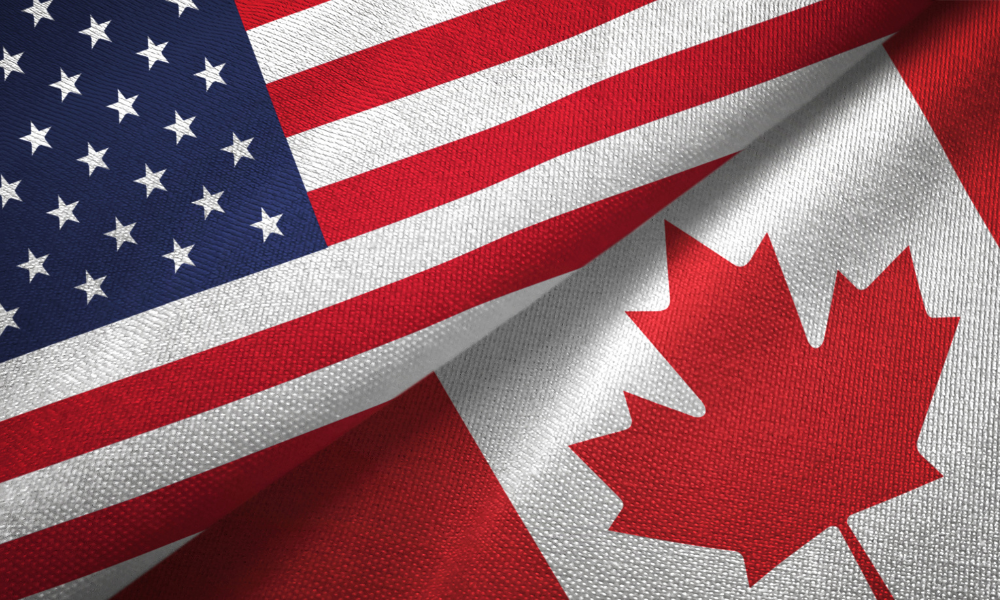
 The stock market fell on Monday after President Donald Trump slapped tariffs on Canada, Mexico and China, eliciting threats of retaliation and setting the stage for a trade war. The Dow Jones Industrial Average slid about 550 points, or 1.25%, in early trading on Monday. The S&P 500 dropped 1.5%, and the tech-heavy Nasdaq plummeted 2%. Traders demonstrated their jitters with a selloff of U.S. auto companies, which hold deep ties to suppliers in Canada and Mexico. Shares of General Motors plummeted 6%, while Ford saw its stock price plunge 4%. The market rout extended worldwide. Japan’s Nikkei index fell 2.5% on Monday, and the pan-European STOXX 600 dropped about 1%.
The stock market fell on Monday after President Donald Trump slapped tariffs on Canada, Mexico and China, eliciting threats of retaliation and setting the stage for a trade war. The Dow Jones Industrial Average slid about 550 points, or 1.25%, in early trading on Monday. The S&P 500 dropped 1.5%, and the tech-heavy Nasdaq plummeted 2%. Traders demonstrated their jitters with a selloff of U.S. auto companies, which hold deep ties to suppliers in Canada and Mexico. Shares of General Motors plummeted 6%, while Ford saw its stock price plunge 4%. The market rout extended worldwide. Japan’s Nikkei index fell 2.5% on Monday, and the pan-European STOXX 600 dropped about 1%. Homeownership has long played a starring role in the American dream. …Nearly nine in 10 homeowners (88% / 81% in 2025) in a survey said the true cost of owning a home is more expensive than they’d expected. …Recent, unexpected hurricane-related floods in Western North Carolina and massive fires across Los Angeles County, which both occurred after the survey was conducted, will surely raise costs even more dramatically this year, and not just in the affected regions. This will be due to fierce competition for construction supplies and labor as disaster-stricken areas compete for resources and everyone else looks to maintain and improve their homes. Tariffs, depending on how they’re applied – e.g., Canadian lumber for rebuilding or across-the-board Chinese imports hitting home improvement store shelves – and potential disruption to the construction workforce can also surge homeownership costs.
Homeownership has long played a starring role in the American dream. …Nearly nine in 10 homeowners (88% / 81% in 2025) in a survey said the true cost of owning a home is more expensive than they’d expected. …Recent, unexpected hurricane-related floods in Western North Carolina and massive fires across Los Angeles County, which both occurred after the survey was conducted, will surely raise costs even more dramatically this year, and not just in the affected regions. This will be due to fierce competition for construction supplies and labor as disaster-stricken areas compete for resources and everyone else looks to maintain and improve their homes. Tariffs, depending on how they’re applied – e.g., Canadian lumber for rebuilding or across-the-board Chinese imports hitting home improvement store shelves – and potential disruption to the construction workforce can also surge homeownership costs.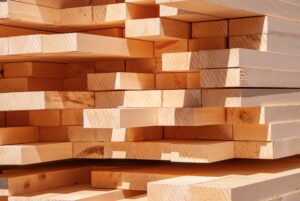 Looming tariffs could cause the cost of construction materials like lumber and mortar to skyrocket— if they actually happen. President Trump indicated these tariffs could go into effect as soon as Feb. 1. If a 25% tariff is imposed on both of the United State’s bordering neighbors, prices of imported goods will inevitably go up. This could be felt particularly keenly in the residential construction industry, which relies heavily on foreign imports for materials. Combined, nearly 20 percent of the total goods used in residential construction in the United States are imported from Canada and Mexico. …Lumber prices have already risen 17 percent in the last year, with much of that increase coming after tariffs on Canadian lumber were raised to nearly 15 percent in August. According to the NAHB, “Total imports of sawmill and wood products from Canada in 2023 was $5.8 billion.
Looming tariffs could cause the cost of construction materials like lumber and mortar to skyrocket— if they actually happen. President Trump indicated these tariffs could go into effect as soon as Feb. 1. If a 25% tariff is imposed on both of the United State’s bordering neighbors, prices of imported goods will inevitably go up. This could be felt particularly keenly in the residential construction industry, which relies heavily on foreign imports for materials. Combined, nearly 20 percent of the total goods used in residential construction in the United States are imported from Canada and Mexico. …Lumber prices have already risen 17 percent in the last year, with much of that increase coming after tariffs on Canadian lumber were raised to nearly 15 percent in August. According to the NAHB, “Total imports of sawmill and wood products from Canada in 2023 was $5.8 billion. Lumber prices are 9.6% higher than they were one year ago. …Impact of wood and lumber prices on the cost of a new home: In addition to narrowly defined framing lumber, products such as plywood, OSB, particleboard, fiberboard, shakes and shingles make up a considerable portion of the total
Lumber prices are 9.6% higher than they were one year ago. …Impact of wood and lumber prices on the cost of a new home: In addition to narrowly defined framing lumber, products such as plywood, OSB, particleboard, fiberboard, shakes and shingles make up a considerable portion of the total 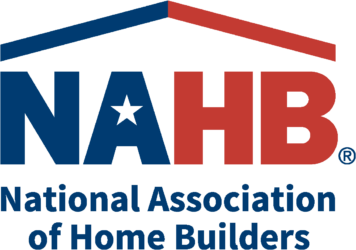
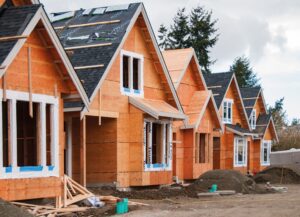 President Donald Trump’s proposal to implement significant tariffs on the country’s key trading partners could have ripple effects on the U.S. housing market. …The tariffs could drive up prices for new homes and renovations, further straining an already tight market. “The tariffs will raise the cost of materials, which could directly increase the cost of constructing new homes,” said Wayne Winegarden at Pacific Research Institute. Experts said tariffs are a tax that increases the costs of imported goods, including building materials. …Higher material and construction costs caused by the tariffs could make buying a home out of reach for many people. “The tariffs will slow down the economy and will also encourage the Federal Reserve to pursue a higher interest rate environment,” Winegarden said. …Together, the higher rates coupled with the rising cost of construction will significantly reduce housing affordability.”
President Donald Trump’s proposal to implement significant tariffs on the country’s key trading partners could have ripple effects on the U.S. housing market. …The tariffs could drive up prices for new homes and renovations, further straining an already tight market. “The tariffs will raise the cost of materials, which could directly increase the cost of constructing new homes,” said Wayne Winegarden at Pacific Research Institute. Experts said tariffs are a tax that increases the costs of imported goods, including building materials. …Higher material and construction costs caused by the tariffs could make buying a home out of reach for many people. “The tariffs will slow down the economy and will also encourage the Federal Reserve to pursue a higher interest rate environment,” Winegarden said. …Together, the higher rates coupled with the rising cost of construction will significantly reduce housing affordability.”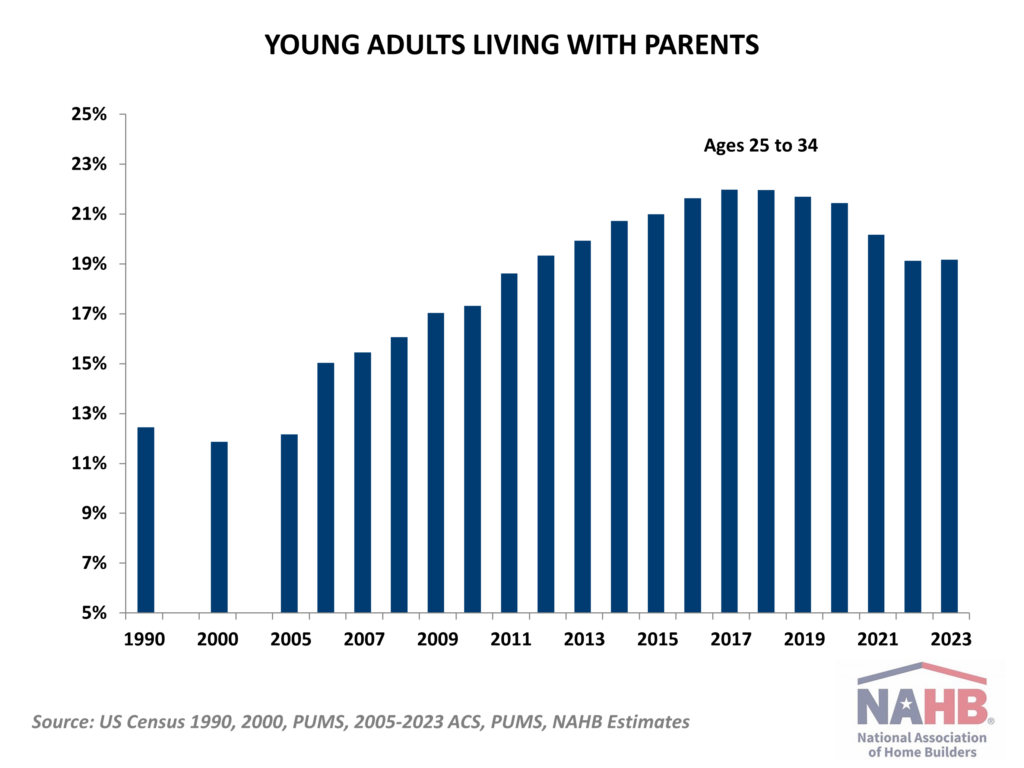
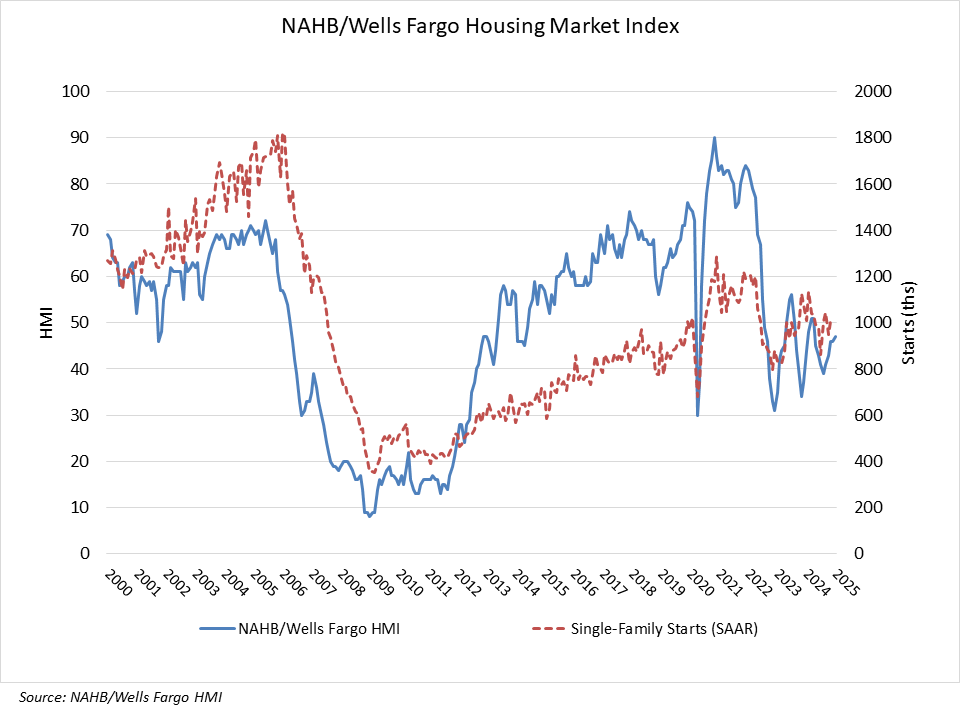
 The NAHB/Westlake Royal Remodeling Market Index (RMI) posted a reading of 68 for the fourth quarter of 2024, up five points compared to the previous quarter. Remodelers are more optimistic about the market than they were earlier in the year, corroborated by NAHB’s recent analysis of home improvement loan applications. Demand in many parts of the country was stronger than usual for the fall season, especially demand for larger projects, with leads coming in after the uncertainty about the November elections was removed. …The Current Conditions Index averaged 75, increasing three points from the previous quarter. All three components remained well above 50 in positive territory: large remodeling projects rose eight points to 75, moderate remodeling projects increased two points to 73, and small remodeling projects inched down one point to 76. …The Future Indicators Index was 61, up six points from the previous quarter.
The NAHB/Westlake Royal Remodeling Market Index (RMI) posted a reading of 68 for the fourth quarter of 2024, up five points compared to the previous quarter. Remodelers are more optimistic about the market than they were earlier in the year, corroborated by NAHB’s recent analysis of home improvement loan applications. Demand in many parts of the country was stronger than usual for the fall season, especially demand for larger projects, with leads coming in after the uncertainty about the November elections was removed. …The Current Conditions Index averaged 75, increasing three points from the previous quarter. All three components remained well above 50 in positive territory: large remodeling projects rose eight points to 75, moderate remodeling projects increased two points to 73, and small remodeling projects inched down one point to 76. …The Future Indicators Index was 61, up six points from the previous quarter.  A report released by the Commerce Department on Friday showed new residential construction in the U.S. surged by much more than anticipated in the month of December. The Commerce Department said housing starts soared by 15.8 percent to an annual rate of 1.499 million in December after tumbling by 3.7 percent to a revised rate of 1.294 million in November. …The spike by housing starts came amid a substantial rebound by multi-family starts, which skyrocketed by 61.5 percent to an annual rate of 449,000 in December after plummeting by 30.7 percent to an annual rate of 278,000 in November. Single-family starts also shot up by 3.3 percent to an annual rate of 1.050 million in December after surging by 7.7 percent to an annual rate of 1.016 million in November. Meanwhile, the report said building permits slid by 0.7 percent to an annual rate of 1.483 million in December after surging by 5.2 percent to a revised rate of 1.493 million in November.
A report released by the Commerce Department on Friday showed new residential construction in the U.S. surged by much more than anticipated in the month of December. The Commerce Department said housing starts soared by 15.8 percent to an annual rate of 1.499 million in December after tumbling by 3.7 percent to a revised rate of 1.294 million in November. …The spike by housing starts came amid a substantial rebound by multi-family starts, which skyrocketed by 61.5 percent to an annual rate of 449,000 in December after plummeting by 30.7 percent to an annual rate of 278,000 in November. Single-family starts also shot up by 3.3 percent to an annual rate of 1.050 million in December after surging by 7.7 percent to an annual rate of 1.016 million in November. Meanwhile, the report said building permits slid by 0.7 percent to an annual rate of 1.483 million in December after surging by 5.2 percent to a revised rate of 1.493 million in November.


 RUSS TAYLOR GLOBAL is pleased to provide the latest quarterly report from the
RUSS TAYLOR GLOBAL is pleased to provide the latest quarterly report from the 